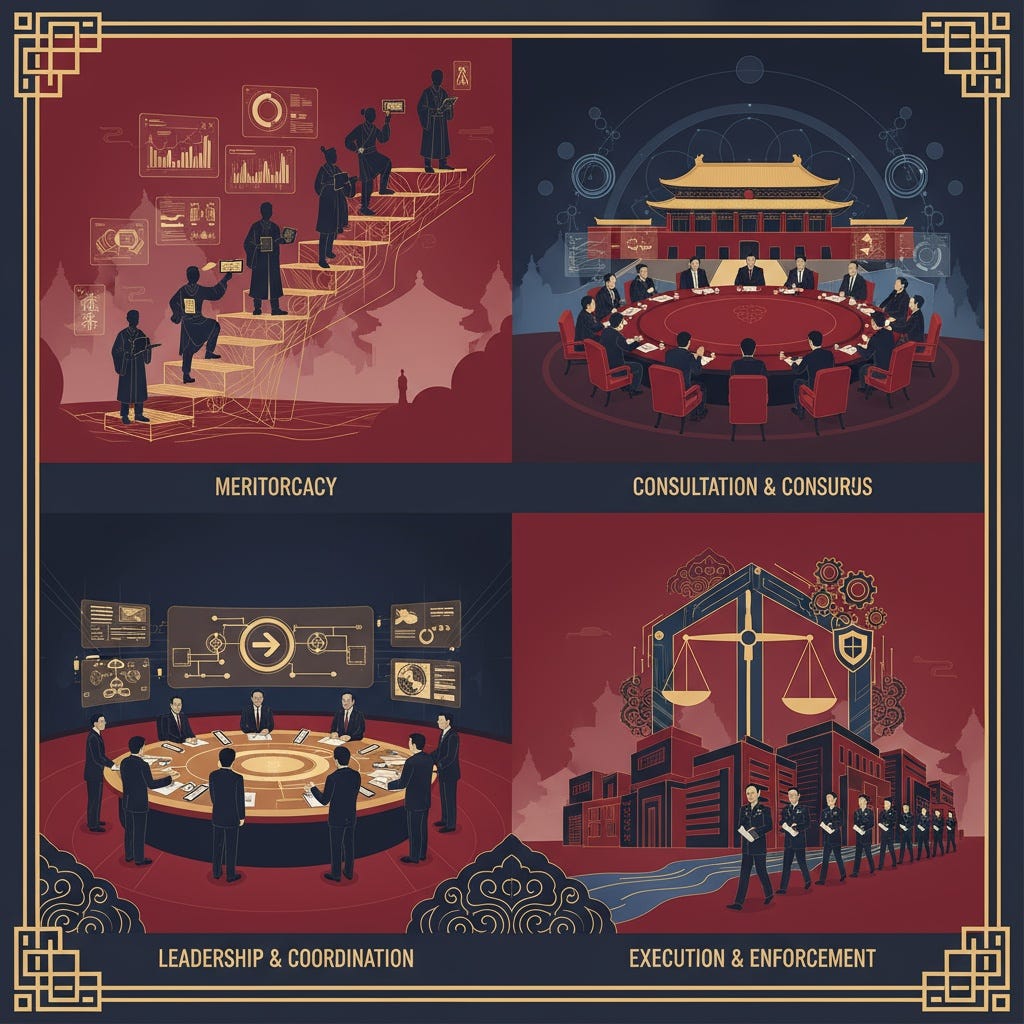Monday Edition — How the Chinese Government Really Works: Merit, Consensus, and Control
How the Chinese government really works
China is not what you think it is.
Unless you’ve spent time in China or studied China, the information you have is more propaganda than information, particularly if you are from the West and even more so if you are from the US.
China is portrayed as a dystopian police state in which everyone is under constant surveillance and living in fear. Its government is painted as an authoritarian dictatorship ruled by a single iron-fisted man.
None of that is true.
I lived and worked in China for several years. It’s not dystopian. It’s far more advanced than the US. People go about their lives as we all do. For example, my Chinese tutor worked for the city government and quit to open a bookstore - pure entrepreneurship. I’d go to the gym, a big chain in China, and regularly run into my students - the same dynamics as in the US. Friday nights at the local watering hole wth Western and Chinese colleagues usually included debate on government policy and the direction it should take - the same as any university setting.
This type of ‘normal’ daily life exists because of the government. You can’t function like this in Somalia, North Korea, or Afghanistan.
China’s government operates through a single-party system designed for stability and performance. It is not democratic, it’s not multiparty, and it’s not designed for individualism. It’s almost the opposite of Western democracy.
The Chinese system is highly structured, organized to reward competence, maintain order, and achieve long-term goals. It combines ancient ideas of Confucian hierarchy with modern bureaucratic discipline. Leadership is earned through proven results rather than election campaigns. The goal is simple: keep the country stable, efficient, unified, and moving forward.
Meritocracy Not Democracy
In China, politicians stay in power based on how well they govern, not by how popular they are.
Officials rise through a long process of evaluation starting at the village level and moving up to the county, city, and province levels before reaching national leadership. Leaders are educated and experienced with promotions depending on measurable performance: economic growth, poverty reduction, and social stability.
This structure has produced stability and competence. Leaders are trained, experienced administrators, not short-term politicians.
A System of Five Pillars
China’s political design has five main components:
Meritocracy – The leadership selection system that selects and promotes capable leaders through performance-based advancement.
Consultation – The Chinese People’s Political Consultative Conference (CPPCC) and National Party Congress, which gather input from experts, minorities, and other political parties.
Leadership – The Politburo and its Standing Committee, which sets national direction and unifies decision-making.
Execution – The State Council and ministries, which implement policies and manage the country’s administration.
Oversight – The Central Commission for Discipline Inspection and the National Supervisory Commission, which investigate corruption and enforce Party discipline.
How We’ll Examine It
This week, we’ll break down how each pillar operates and why it matters:
Tuesday – The Meritocratic Core: How China’s promotion system uses meritocracy, not elections, to choose leaders.
Wednesday – Consultation and Consensus: How the CPPCC and Party Congress use data, differing approaches, and opposing ideas into a unified direction.
Thursday – The Command Center: How the Politburo and its Standing Committee coordinate decisions that guide the entire state.
Friday – Execution and Enforcement: How the State Council implements those decisions and how the disciplinary system maintains order and trust.
Saturday’s Prime Brief will show how these institutions create a model that values competence and experience over popularity and competition.
Join us for more cultural perspectives on TikTok and YouTube




